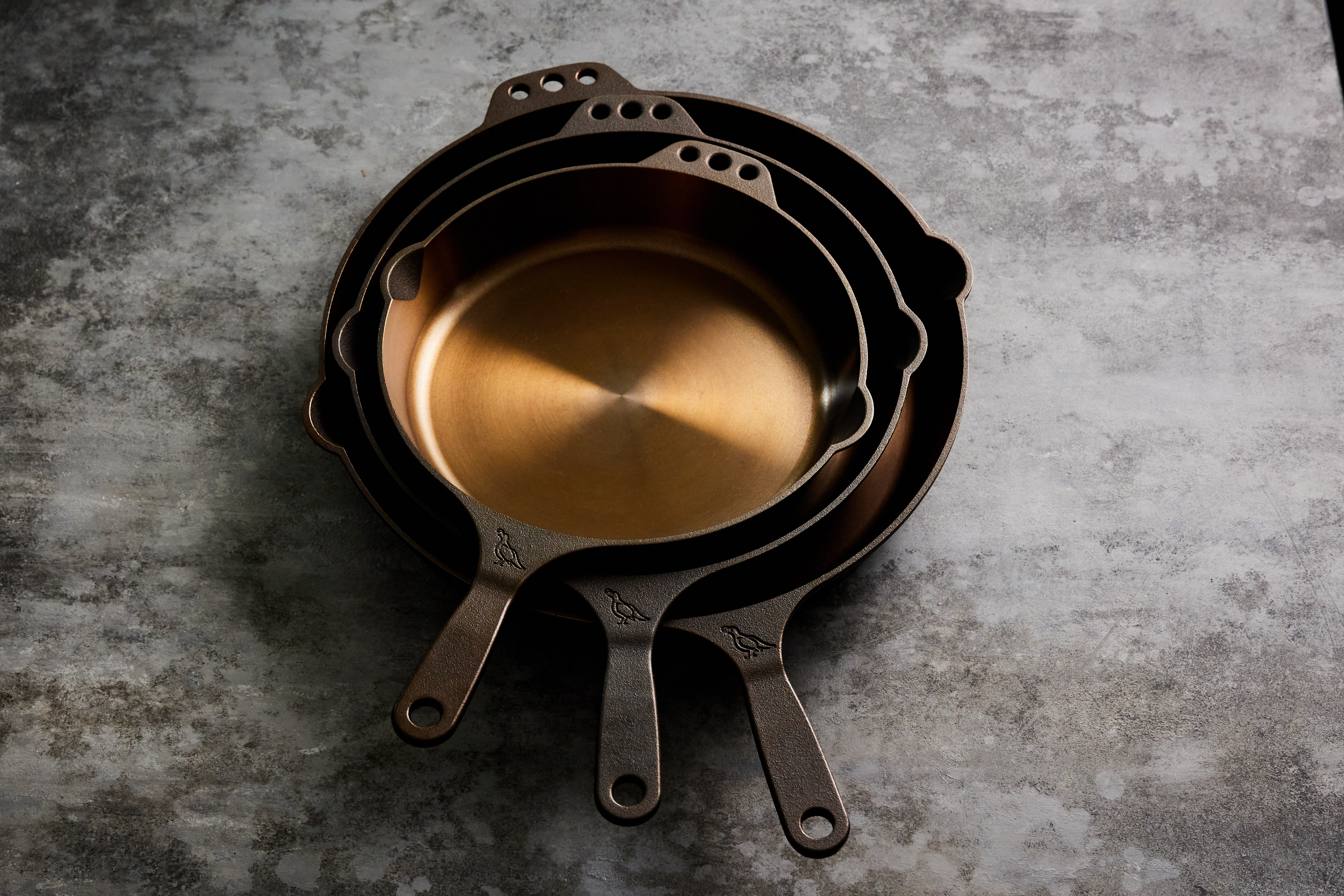Thoughts on “Non-Stick” Cookware

No one enjoys it when food sticks to a pan. It’s messy, frustrating, and can make even experienced cooks feel like they’ve done something wrong. For generations of American home chefs, the solution to this problem was simple: a well-seasoned cast iron skillet.
Part tradition and part science, seasoning refers to the process by which natural oils or fats bond with the surface of cast iron under high heat, forming a thin, protective layer. This layer not only prevents rust but also creates a naturally non-stick cooking surface that improves with time. Seasoned cast iron is a remarkably durable invention—one of the few tools in the kitchen that actually gets better the more you use it.
But starting in the 1950s and ’60s, this traditional cookware began to fall out of favor. The reason? A wave of so-called innovations. Chemical coatings—originally developed as engine lubricants during World War II—were repurposed for the kitchen. These synthetic sprays provided impressive resistance to sticking and were applied to lighter, cheaper cookware. Thus began the age of chemically coated “non-stick” pans.
Fast forward to today, and there’s a growing awareness around the health and environmental risks of these coatings. In particular, attention has turned to “forever chemicals,” a group of substances known as PFAS (per- and polyfluoroalkyl substances), which include well-known compounds like PFOA and PTFE. These chemicals have been used in non-stick cookware for decades because of their slippery properties. However, PFAS do not break down naturally, which means they persist in the environment—and in our bodies—for years. They’ve been linked to a range of serious health issues, including hormone disruption, cancer, liver damage, and developmental problems in children.
While increased regulation and public pressure have led many manufacturers to phase out PFOA, most non-stick cookware still contains PTFE—a close chemical cousin. The result is a product labeled “PFOA-free” that may still raise environmental and health concerns.
Now contrast that with Smithey. Our cast iron and carbon steel cookware is completely free from PFAS, PFOA, and PTFE. We use traditional materials—iron and steel—seasoned with natural oils, not synthetic chemicals. This means there are no forever chemicals baked into your cookware, and no risk of toxic fumes being released if the pan gets too hot.
There’s another important difference. Chemically coated non-stick pans tend to degrade after just a few years of use, often ending up in landfills—along with the very chemicals we’re trying to avoid. A Smithey, on the other hand, is built to last a lifetime—and likely several more after that.

No one enjoys it when food sticks to a pan. It’s messy, frustrating, and can make even experienced cooks feel like they’ve done something wrong. For generations of American home chefs, the solution to this problem was simple: a well-seasoned cast iron skillet.
Part tradition and part science, seasoning refers to the process by which natural oils or fats bond with the surface of cast iron under high heat, forming a thin, protective layer. This layer not only prevents rust but also creates a naturally non-stick cooking surface that improves with time. Seasoned cast iron is a remarkably durable invention—one of the few tools in the kitchen that actually gets better the more you use it.
But starting in the 1950s and ’60s, this traditional cookware began to fall out of favor. The reason? A wave of so-called innovations. Chemical coatings—originally developed as engine lubricants during World War II—were repurposed for the kitchen. These synthetic sprays provided impressive resistance to sticking and were applied to lighter, cheaper cookware. Thus began the age of chemically coated “non-stick” pans.
Fast forward to today, and there’s a growing awareness around the health and environmental risks of these coatings. In particular, attention has turned to “forever chemicals,” a group of substances known as PFAS (per- and polyfluoroalkyl substances), which include well-known compounds like PFOA and PTFE. These chemicals have been used in non-stick cookware for decades because of their slippery properties. However, PFAS do not break down naturally, which means they persist in the environment—and in our bodies—for years. They’ve been linked to a range of serious health issues, including hormone disruption, cancer, liver damage, and developmental problems in children.
While increased regulation and public pressure have led many manufacturers to phase out PFOA, most non-stick cookware still contains PTFE—a close chemical cousin. The result is a product labeled “PFOA-free” that may still raise environmental and health concerns.
Now contrast that with Smithey. Our cast iron and carbon steel cookware is completely free from PFAS, PFOA, and PTFE. We use traditional materials—iron and steel—seasoned with natural oils, not synthetic chemicals. This means there are no forever chemicals baked into your cookware, and no risk of toxic fumes being released if the pan gets too hot.
There’s another important difference. Chemically coated non-stick pans tend to degrade after just a few years of use, often ending up in landfills—along with the very chemicals we’re trying to avoid. A Smithey, on the other hand, is built to last a lifetime—and likely several more after that.































